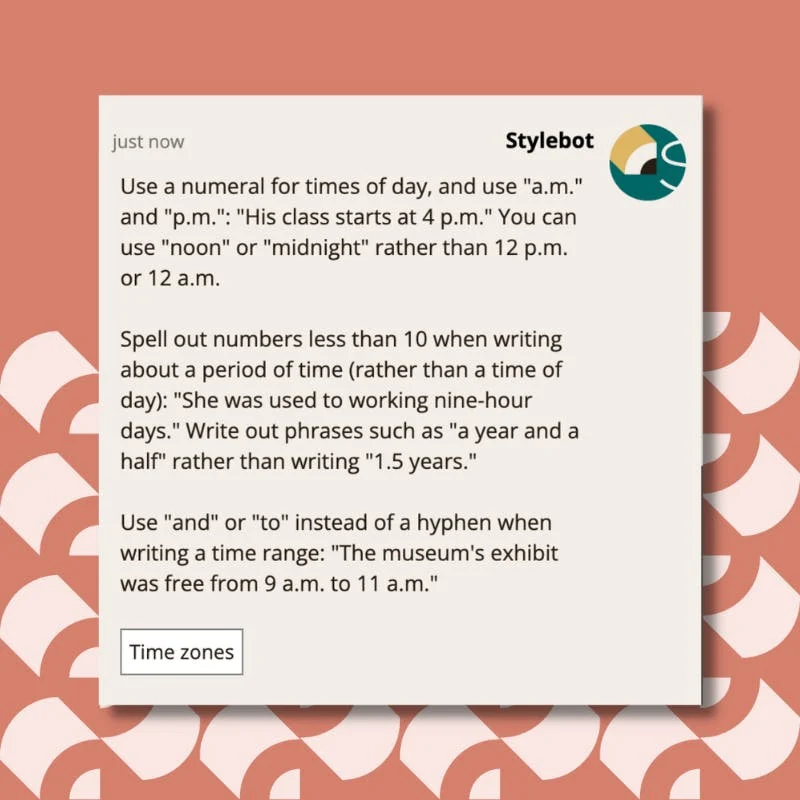There are some abbreviations and acronyms that are so familiar to us that we don’t even know what they stand for. You’ve probably heard of NASCAR, but have you heard of the National Association for Stock Car Auto Racing? And do you curse the IRS or the Internal Revenue Service during tax season?
Here are two that you probably see, use or at least think about every day: a.m. and p.m. Unlike many abbreviations, they are lowercase, and the periods help minimize confusion, though people will still probably know what you mean if you type “10am.”

So, what do these morning and afternoon markers stand for? Well, pretty much “morning” and “afternoon,” but make it Latin. “A.m.” means “ante meridiem” and “p.m.” means “post meridiem,” aka, “before noon” and “after noon.”
If you’re having a TIL moment, do us a favor: Share this post with someone who you think will appreciate it. (And if “TIL” is an abbreviation you’re not familiar with, reply and let us know.)
💬 Need more tips?
Want to get writing tips like these on demand? Try Stylebot for free.
📝 About Stylebot
Stylebot helps media professionals save time without sacrificing quality by answering copy editing questions on Slack and Microsoft Teams. We’re on a mission to make editing faster, easier and more fun ✨Lean more about Stylebot or follow us on Twitter and Instagram.
